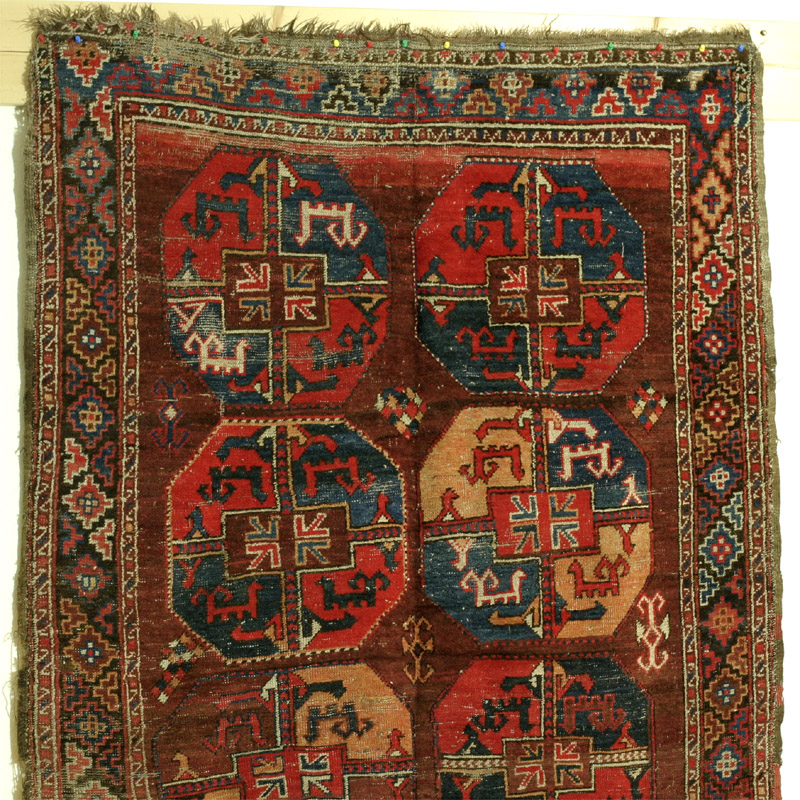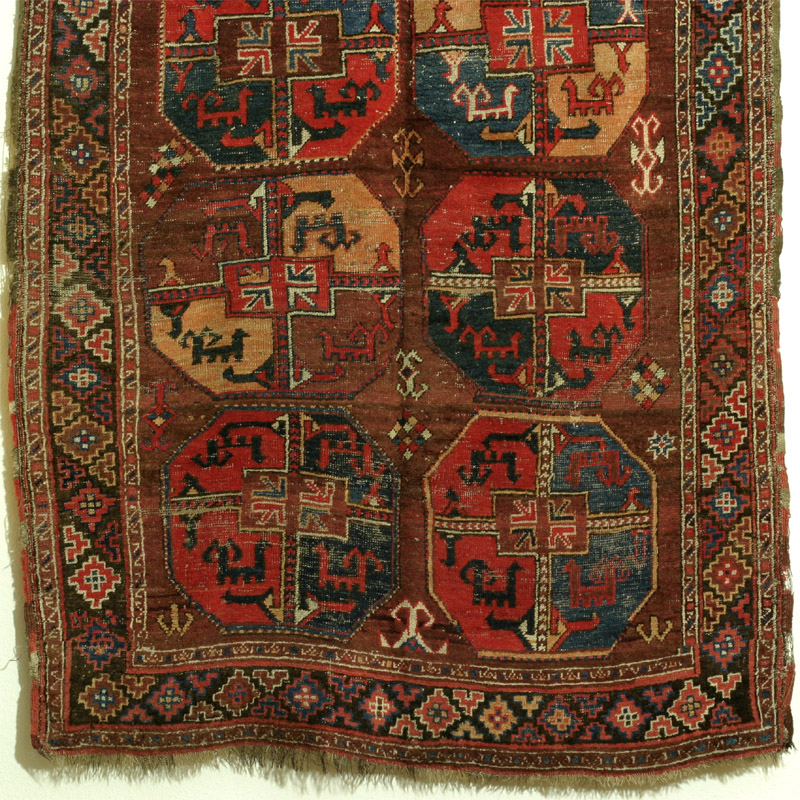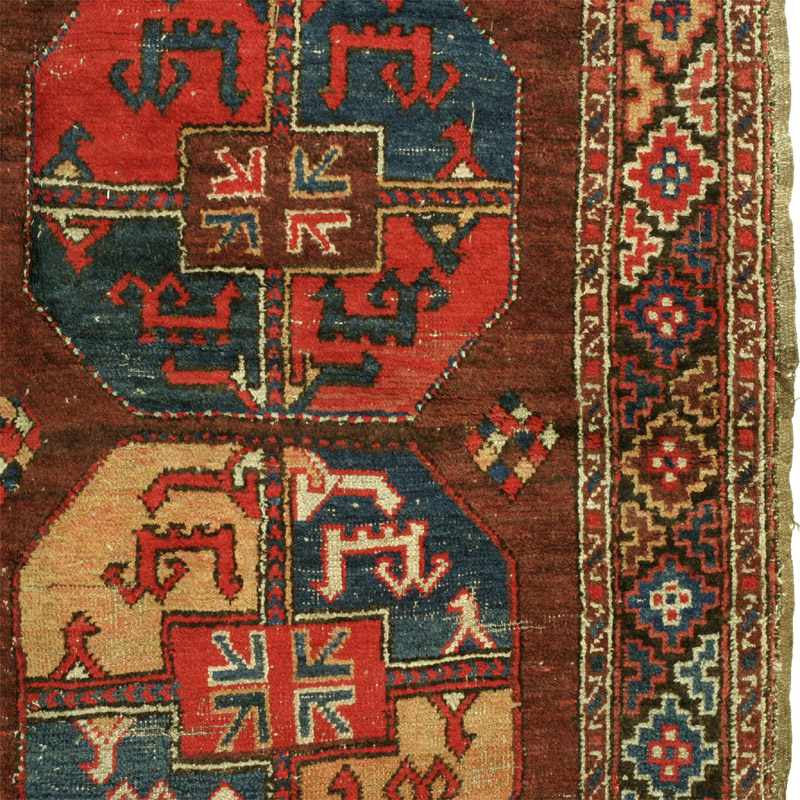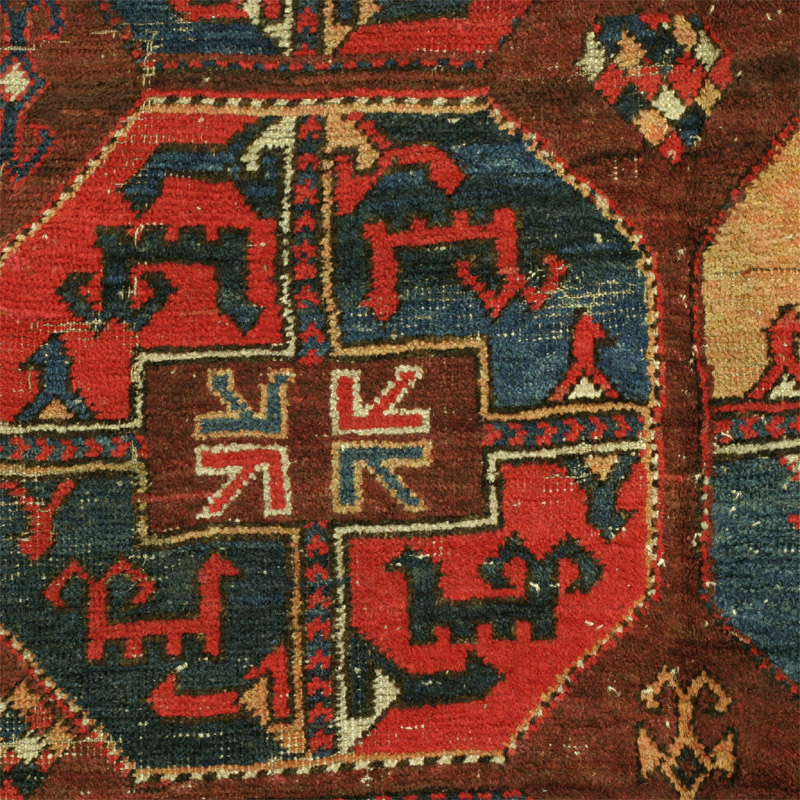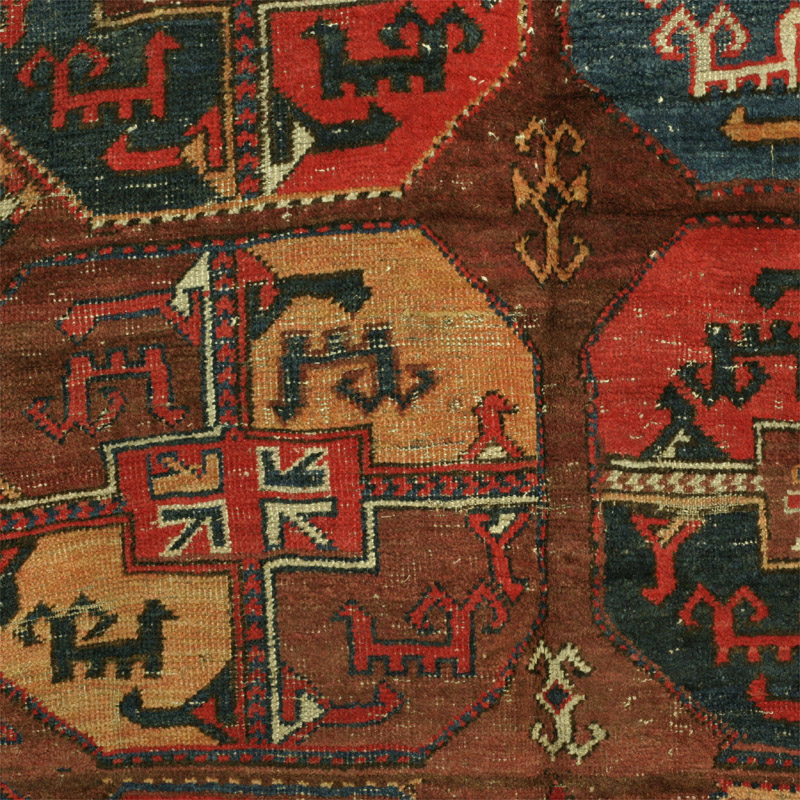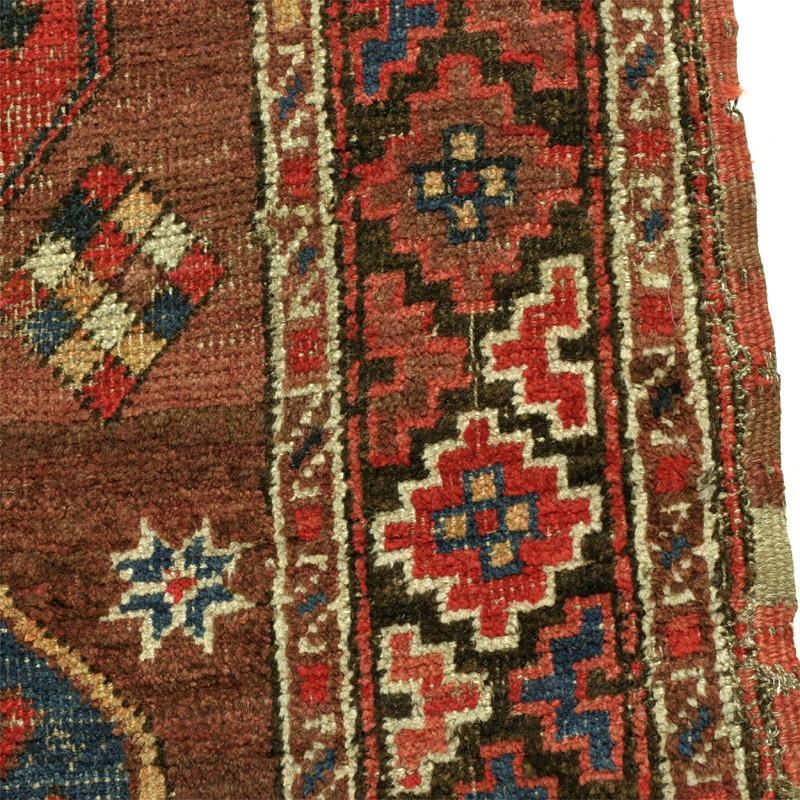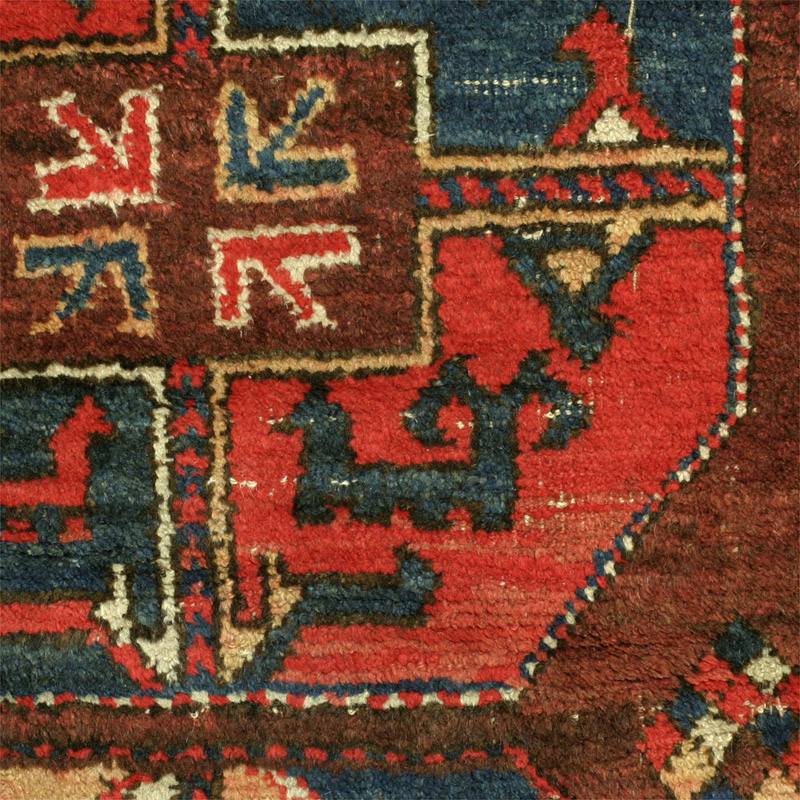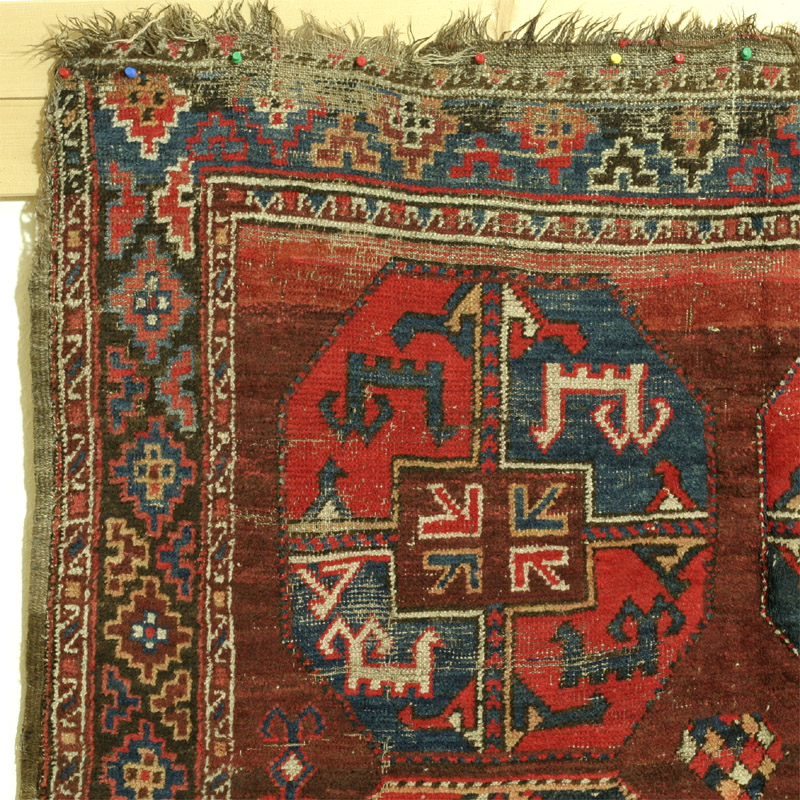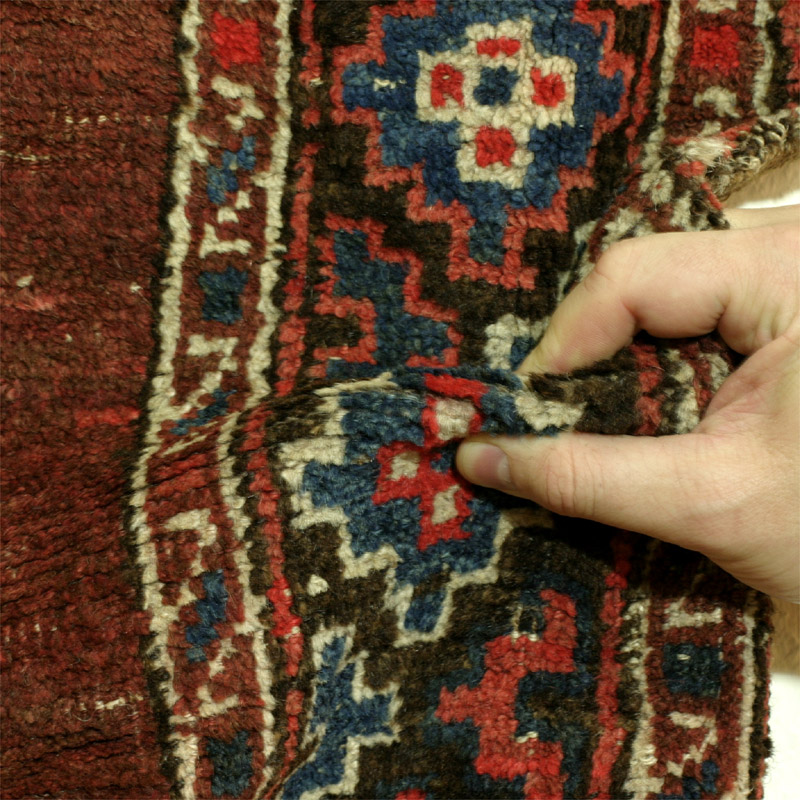This stunning Karakalpak or Uzbek main rug with its huge guls has the lively elements of improvisation that are usually missing in the more tidy Turkmen rugs and bags. An exact attribution would be tenuous - as Eiland & Eiland note in their Oriental rugs - a complete guide: "Uzbeki pile weaves are still among the least understood Central Asian rugs." (A similar piece with five rows is reproduced on page 254). Bogolubov attributes these rugs to the Karakalpak that used to live in the Amu Darya delta (I have no clue whether they still do), while Moshkova holds them to be a product of Turkmen Uzbekis. According to the Eilands, still others think that rugs of this type were never woven there, so the verdict is out on where they actually originate and which group(s) wove them.
In any case, this is a truly rustic weave originating from the late 19th century, with a bold design and deeply saturated dyes. Four rows of Kalkan nuska guls (according to Moshkova - it simply translates 'shield medallion') are set on a maroon madder ground. The quartered guls (four red-blue with cross-over mirroring, the bottom two with red and blue left and right respectively, one using apricot and blue, and the last, somewhat perplexingly, apricot and the maroon ground color in overcross mirroring) contain in their centres the characteristic inwards-pointing arrows, while the gul quarter fields contain boldly drawn quadrupeds with tails anding in ramshorn-like hooks. In between main guls, there are no standard secondary gul but various filler elements: diamonds ending in ramshorn motives on top and bottom, and larger diamond shapes (some charmingly incomplete) composed of many small diamonds in various colors. The wide main border is very simple, consisting of an endless repeat of stepped diamonds. It is flanked by two narrow borders both showing a kind of meander pattern.
The rug measures 7ft.5in. x 4ft.10in. (226 x 147 cm). The weave is coarse and relatively loose (about 7 knots per inch horizonal, 5 knots per inch vertical, i.e. 35 kpsi) and the warps are not depressed (i.e. on the same level). Both warps and wefts are greyish-brown wool, two weft shots after each row of knots. The handle is pliable but substantial, the pile is about 8mm long in the outer areas and shorter toards the centre. Some areas, especially the blue ones, show some wear with the ground peaking through in some parts (compare images). The sides are four cord flat selvages wrapped in grey-brown and in some areas also in other colours; while they appear to be old, they seem not an integral part of the rug in that the wefts don't go round these cords, instead they appear to be sewn on to the side. Whether the rug was made this way or whether selvages were once taken off and were repaced (that would have to be a very old repair), I am not sure. There is some loss to the selvage in the top left corner (see images) and a small worn area at the top of the rug.
Very nice saturated dyes, no tip fading, discoloration or bleeding. There is the abrashed deep madder maroon of the ground, a saturated indigo blue also with some abrash, and a pretty apricot which seems madder-based. Off-white and dark brown also appear, mainly in outlining. I think the strong red used in the guls may be madder on a tin mordant, but I cannot exclude that it has a synthetic dye element. Synthetic dyes are known to have been used quite early in central Asia, they also appear in many Turkmen rugs (although many dealers will not like to admit the possibility). Personally, I just cannot be sure. In any case, there is no fading and no bleeding that I could spot, and since all dyes work very well together as ensemble of colors, nothing detracts from the beauty and authenticity of this rug.
